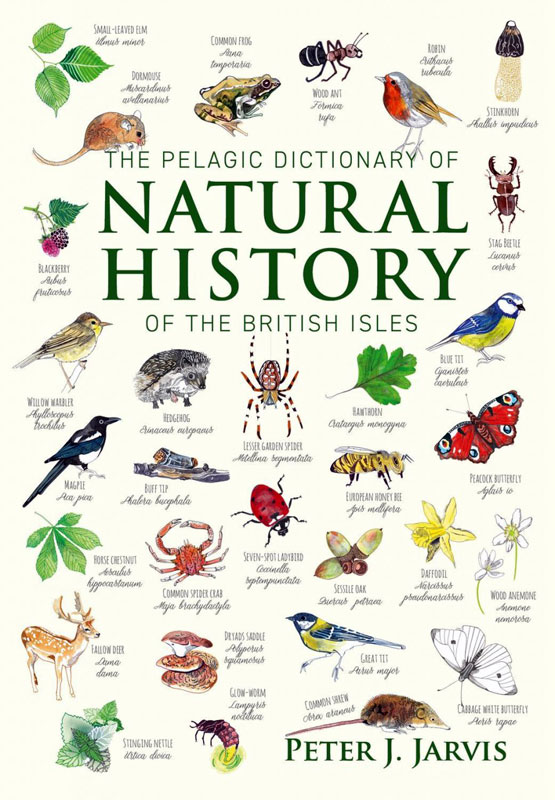| By Peter Jarvis | Pelagic Publishing | 2020 | Hardback | eBook available | 549 Pages | ISBN: 9781784271947
Descriptions of all Species with a Common Name

The Publisher’s View:
- The only dictionary covering all species in the British Isles
- A unique collection of natural history information
- Perfect for reference and browsing
A unique collection of concise but detailed information on 10,000 animals, plants, fungi and algae of the British Isles. Every species with an English common name is included.
The compendium is in two parts. The first, smaller part, looks at various terms
that people interested in natural history may come across. The second provides information on individual species or species groups, with entries on those with English (common) names, as well as selected families, orders, classes, etc. In the case of marine organisms, entries are given for intertidal and subtidal invertebrate species, and generally speaking for fish species that might be observed inshore. Indication is often given on distribution as well as whether a species is common, scarce or something in between. For some species a note is made of population size and trends. Comments are made where appropriate on etymology, both of the English name and the binomial.
No other natural history dictionary or cognate publication relating to the British Isles is as comprehensive in taxonomic cover.
The Author: Peter Jarvis has an academic background in Geography and Environmental Science and was latterly an Honorary Research Fellow at Birmingham University. He was President of the Birmingham Natural History Society and has sat on the national committees of UK Man and the Biosphere (Urban Programme) and the Royal Society for Nature Conservation. His output includes refereed academic articles, wildlife journalism and several books, including Ecological principles and environmental issues (2000).
Fatbirder View:
Fatbirder followers will know I like dictionaries so much I write them. Here is one I wish I had written, but fear I do not have the necessary depth of knowledge as it covers every known UK species across the whole tree of life. I think the decision to split it between ‘terms’ and ‘species’ is a good one. Many of us amateur naturalists struggle with scientific terms and here the ones we need are spelled out. We will, naturally not be familiar with the majority of British species, as a birder I know the names of birds and most mammals, reptiles, amphibians and a few insects particularly dragonflies and butterflies. I can count the number of beetles I can name on the fingers of one hand and need this dictionary as an easy reference when I come across a beetle, barnacle or beech tree should I want to know more.
Such reference works are always a jumping off point to expand your knowledge but also a handy place to check a fact or just dip and read.
I spent several months in hospital as a child and my parents brought me every encyclopaedia they could get their hands on. If you can read you are never to young to look stuff up (or too old for that matter) and the great thing about such books is one thing leads to another and following a word chain means you learn all sorts of stuff you didn’t even know you wanted to know.
This is a book every UK household should have if we are to reclaim our island for all the creatures and plants that live here. This one’s a keeper.
Fatbirder
